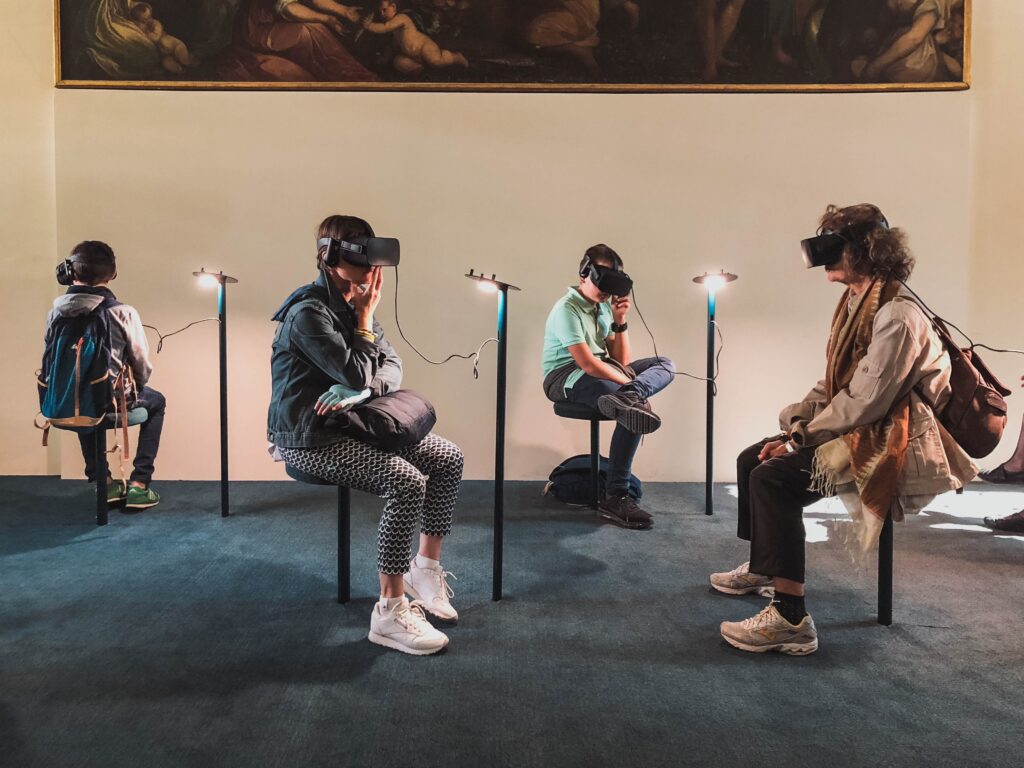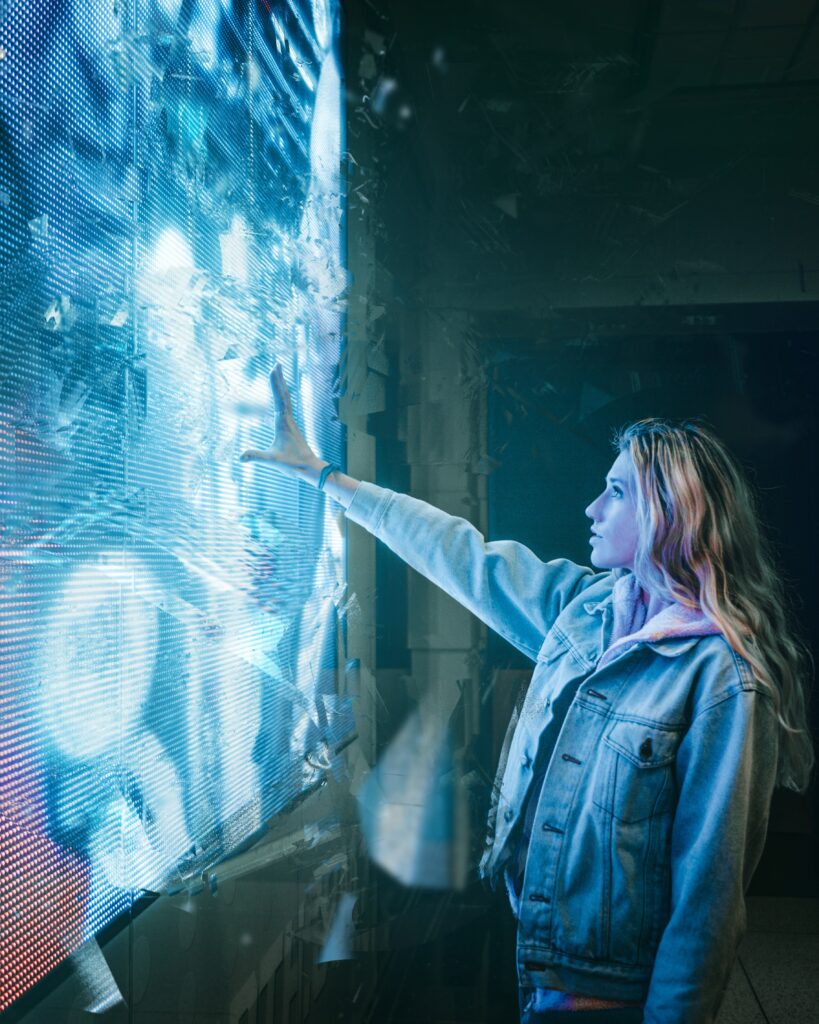In part 1, we covered what the metaverse actually is, and made some predictions to questions such as “will immersiveness dominate,” and “who will win & lose?” Here in part 2, we’ll focus on the metaverse’s impacts to brands as well as influencers and consumers.
Impacts of the Metaverse on Consumers
An article on the Meta Newsroom describes the metaverse as, “a set of virtual spaces where you can create and explore with other people who aren’t in the same physical space as you.” Consumers can try on new clothes, test drive cars, and experiment with new hairstyles. Metaverse activities can encourage people to stand up and move, which is beneficial for health and can lead to increased steps counts and even improved fitness.
Verity McIntosh, a VR expert at the University of the West of England, told the BBC that the granularity of data available from the use of VR/AR is an order of magnitude higher than on screen-based media. “Now it’s not just about where I click and what I choose to share, it’s about where I choose to go, how I stand, what I look at for longest, the subtle ways that I physically move my body and react to certain stimuli. It’s a direct route to my subconscious, and that is gold to a data capitalist.”
The implications for manipulating people are thus orders of magnitude higher as well. If misused, with algorithms that present users with media that angers them, the metaverse could have a negative impact on society, leading to increased division. Protecting privacy will remain a difficult, ever evolving challenge.
The Blurring Lines Between Metaverse and Reality

The metaverse is a world on its own where people exist and interact, as opposed to passively viewing a web page. There are much bigger similarities between the metaverse and the real world, and the lines between the two will increasingly blur.
PREDICTION: Brands will be able to generate cross-over effects, driving real world behaviors through metaverse marketing and even vice versa. Spillover effects could include digital products promoted in the metaverse becoming more popular in real life as well.
The Role of Brands in Defining the Metaverse
According to a deep dive by The Drum, “We know that marketers have a huge role to play in defining the future of the metaverse, from creating the event spaces within platforms to selling consumers on the tech that allows them to experience it.” Luxury brands are selling digital-only products in the metaverse. According to Morgan Stanley, digital demand for fashion and luxury brands is expected to grow and could reach $50 billion by 2030.
Users have the potential to become who they fantasize they could be. In Part 3, we’ll delve into the enticing freedom of the metaverse. Winning brands will dream along with consumers and become their partner in helping them achieve the metaverse identity they want.
Transformed Opportunities to Interact
Advertising is often viewed as something negative, an interruption. It’s possible that legacy, annoying ads will be copy/ pasted onto the metaverse, and users will be bombarded with irritating digital billboards and flying banners. Writing for Cointelegraph, Tom Mitchelhill captures the bleak possibilities. “Now, Stephenson’s striking fictional depictions of a Metaverse over saturated with the neon glow of commercial advertising rings truer than ever as Web3 designers and marketers gear up to begin advertising in the emerging Metaverse(s).” Digital entertainment and media platform Azerion recently partnered with Bidstack, in-game advertising and video game monetization platform. Bidstack Founder and CEO said the contract, “signals a realization that brand advertising within the metaverse has truly arrived.”
However, the metaverse provides brands with a whole new set of tools to connect with customers. Currently, digital and physical experiences are often very disconnected, but the metaverse generates new opportunities to add value to customers with immersive, engaging experiences and new products in the form of NFTs (Non-Fungible Tokens). Influencers also have more opportunities to engage with their communities, such as being present at a concert or virtual store.
PREDICTION: The sale of digital goods will become important for brands and influencers alike. Digital goods can be leveraged both in marketing campaigns as well as sold to generate new revenue streams.
What Should Brands Be Doing?
New features are being built, investments are being made, and people are experimenting. The Metaverse is currently a huge green field with many opportunities as well as many unknowns. Meta Reality Labs (a sibling unit to Facebook) has committed to spending at least $10bn a year on developing experiences that fuse augmented reality (AR) and virtual reality (VR) hardware with software and content.
Brands may wonder if they should already be developing plans to get into the metaverse. The immersive experience of the metaverse enables brands to promote their products in new and innovative ways. For example, fashion brands can sell or give away digital versions of their clothing and accessories. Those in the hospitality industry can recreate the architecture of their venues and host virtual events.

Time to Start Experimenting

Meta’s Reality Labs division, the segment of the company tasked with building the metaverse, lost more than $10 billion in 2021, and the losses keep growing. Executives said it could take up to 15 years to fully realize their vision. With a timeline of “up to 15 years,” there isn’t a big rush. But now is a good time to start the process of creating metaverse experiences.
In the Metaverse, brands and influencers have the opportunity to innovate, experiment, and adapt to improve outcomes, establishing leading positions in advance of Metaverse’s growth into the mainstream.
Although NFTs are already being sold on existing social media platforms, interacting in a virtual world should increase demand for NFTs, presenting influencers and brands alike with an opportunity to increase revenue.
- PREDICTION: NFTs will be a big opportunity for brands as well as digital artists and content creators to monetize content in a new way and build new revenue streams. Developing smart strategies will be crucial for brands and influencers.
Are You Already Behind the Curve?
We don’t think brands need to worry about falling behind just yet. For a marketing channel to deliver positive ROI, brands must be able to reach their target audience. Achieving this objective in the metaverse will require necessary saturation, with a certain quantity of active users. The critical mass isn’t there yet, so brands aren’t at risk of falling behind competitors.
- PREDICTION: We’re not close to this point yet, but nor is it in the distant future. It’s just beginning, with a critical mass of users being three to five years away.
But on the one hand, it’s good to start planning. Now is the time to start acquiring knowledge and building those skills, including getting the support of knowledgeable marketers, so you’re ready.
One thing is certain, the metaverse will require marketers to frequently adapt and re-strategize. Selecting influencers and building an influencer network will become much more complex.
- PREDICTION: The guidance of experts and support from agencies will be more critical than ever.
Author: Megan Bozman, Owner @Boz Content Marketing

